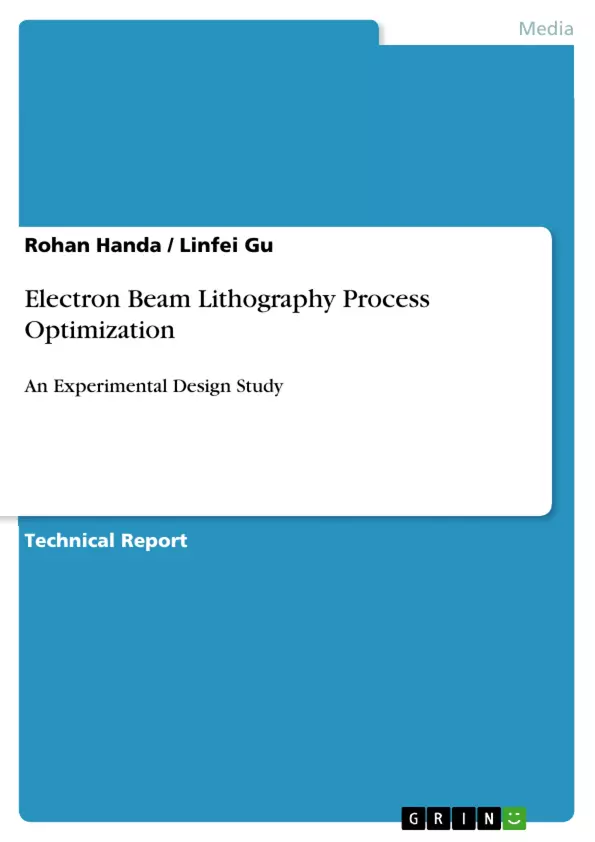Currently, nanowires have aroused intensive attention due to their interesting electric and optical properties as well as potentially wide application (For example, nanowires can be used as a promising structure for transistor channels). For compound semiconductor nanowires, Nanoscale Selective Area MOCVD (Metalorganic Chemical Vapor Deposition), or NS‐SAG, is a very attractive growth technique for the fabrication of sophisticated nanowire structure, because by using this technique, diameter and location of wires are controllable, with no incorporation of unwanted metals. It is achieved by deposition of a nano‐openingarray ‐patterned dielectric mask above the substrate. Since crystals cannot be formed on dielectric mask, nanowire growth only occurs at openings, with desired diameters and locations, as shown in Fig 1. Pattern of nano opening arrays is of vital importance since it governs the size, location and density of nanowires as wells as growth rate and behavior.
Inhaltsverzeichnis (Table of Contents)
- Objective
- Problem Statement
- Background
- Experimental Responses
- Design Assumptions
- Experimental Design
- Factors and Levels
- Replication
Zielsetzung und Themenschwerpunkte (Objectives and Key Themes)
The objective of this project is to design experimental plans and analysis procedures to explore the relationships between the responses (pitch and opening diameter) and four factors (step size, working distance, electron dosage, and acceleration voltage). The goal is to identify optimal settings for each factor to achieve a 500nm pitch and 200nm opening diameter with minimal response variances.
- Optimization of Electron Beam Lithography (EBL) parameters for nanowire fabrication.
- Relationship between EBL parameters (step size, working distance, electron dosage, acceleration voltage) and resulting nanowire array characteristics (pitch and opening diameter).
- Statistical experimental design and analysis for process optimization.
- Minimizing response variances in nanowire array fabrication.
- Achieving target values of 500nm pitch and 200nm opening diameter.
Zusammenfassung der Kapitel (Chapter Summaries)
The Objective section outlines the project's goals: to optimize EBL parameters for nanowire fabrication and identify optimal settings for achieving specific pitch and opening diameter targets. The Problem Statement introduces the context, explaining the importance of nanowire fabrication and the challenges associated with achieving uniformity and control using EBL. It highlights the role of EBL parameters in the process. The Experimental Responses section defines the two key responses being measured: pitch and opening diameter, along with their target values. The Design Assumptions section details limitations and considerations in the experimental setup, such as fixed tip parameters and run-to-run variance. Finally, the Experimental Design section begins to lay out the methodology, including the factors under investigation and their experimental ranges, and touches upon the concept of replication to account for variability.
Schlüsselwörter (Keywords)
Electron Beam Lithography (EBL), Nanowire Fabrication, Experimental Design, Process Optimization, Nanoscale Selective Area MOCVD (NS-SAG), Pitch, Opening Diameter, Step Size, Working Distance, Electron Dosage, Acceleration Voltage, Response Variance.
- Citation du texte
- Rohan Handa (Auteur), Linfei Gu (Auteur), 2011, Electron Beam Lithography Process Optimization, Munich, GRIN Verlag, https://www.grin.com/document/183131



